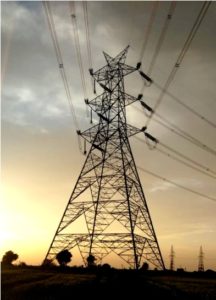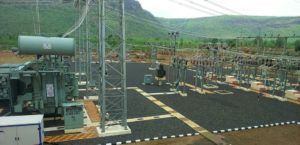MPPTCL shall definitely emerge as one of the best transmission utilities in India
- September 12, 2019
 Madhya Pradesh Power Transmission Company Ltd, was incorporated in 2002, by carving out power transmission activities of the erstwhile Madhya Pradesh State Electricity Board. In this exclusive interview with T&D India, we have P.A.R. Bende, Managing Director, MPPTCL, who has been associated with Madhya Pradesh’s power sector for four decades, discussing MPPTCL’s progress over the years. Buoyed by the company’s excellent performance in 2018-19, Bende is confident that MPPTCL is on its way to emerging as one of the best transmission utilities in India. An interview by Venugopal Pillai.
Madhya Pradesh Power Transmission Company Ltd, was incorporated in 2002, by carving out power transmission activities of the erstwhile Madhya Pradesh State Electricity Board. In this exclusive interview with T&D India, we have P.A.R. Bende, Managing Director, MPPTCL, who has been associated with Madhya Pradesh’s power sector for four decades, discussing MPPTCL’s progress over the years. Buoyed by the company’s excellent performance in 2018-19, Bende is confident that MPPTCL is on its way to emerging as one of the best transmission utilities in India. An interview by Venugopal Pillai.
Let us start by understanding the power transmission network of MPPTCL, in terms of number of substations, length of transmission lines, transformation capacity, etc.
The size and capacity of the Madhya Pradesh grid has shown commensurate increase with 35,570 ckm of EHV lines and 370 EHV substations with a total transformation capacity of 61,201 MVA already in operation. We have also been able to reduce intrastate transmission loss levels substantially to about 2.71 per cent from 7.93 per cent in 2002-03. The peak demand met has grown three-fold at 1,489 mw as compared to that in 2002-03.
How has been the growth in transmission capacity over the past five years or so?
MPPTCL has made remarkable growth in transmission capacity to the tune of 17,200 mw for the year 2018-19 as compared to 12,600 mw in year 2014-15 and also met system demand of 14,089 mw in 2018-19 as compared to 9,832 mw in 2014-15.
Currently, what is the transmission system availability (in percentage) and how has this improved over the past few years?
MPPTCL has made a substantial improvement and achieved system availability of 99.59 per cent in 2018-19 which is significant as compared to 98.16 per cent, 98.39 per cent and 99.15 per cent during the years 2015-16, 2016-17 and 2017-18, respectively.
We have always performed better against the 98 per cent normative availability targeted by MPERC. The higher availability achieved through planned and preventive maintenance of transmission lines and equipments, bare-hand hotline maintenance of lines and substation elements through insulated aerial work platform, use of emergency restoration system (ERS) and periodic testing of substation equipments.
We understand that MPPTCL has three SCADA control centers. Tell us more on the functionalities of these centres and how it has improved monitoring of substations and system availability.
 MPPTCL is the first transmission utility in the country to implement a transco SCADA centre. There are three discoms in the state and hence three Transco SCADA centres have been put up in geographical area of each discom with Jabalpur SCADA Centre as State Control Centre where data from other two SCADA centers is transferred. MPPTCL also provided Remote SCADA terminals at three Discom Control Centers where they can monitor their interface point drawal from the transco network.
MPPTCL is the first transmission utility in the country to implement a transco SCADA centre. There are three discoms in the state and hence three Transco SCADA centres have been put up in geographical area of each discom with Jabalpur SCADA Centre as State Control Centre where data from other two SCADA centers is transferred. MPPTCL also provided Remote SCADA terminals at three Discom Control Centers where they can monitor their interface point drawal from the transco network.
The telemetering units not only send data to two master SCADA stations, each of Transco and SLDC systems, but also provide substation local SCADA monitoring through Local Data Monitoring System (LDMS). This way this system is unique in the world as it reports to five individual systems simultaneously. This facilitated stoppage of manual data punching at all EHV substations.
The renewable generation data at EHV integration point has achieved redundancy of RE Generation observability. The Reactive Energy management is ensured as real time data is available.
Moreover, quality monitoring of substation equipments viz power transformer, CT, PT, circuit breakers, battery sets and chargers etc. is being done using SCADA system.
Exact tripping details are communicated via SMS. Therefore, prompt measure is taken to reduce outage time, thereby system availability is improved. Accurate time of drippings through Sequence of Events (SOE) data helps protection engineers to ensure fine tuning of the protection system.
SCADA also benefitted in reduction of transmission losses by control of voltages and circulating MVAR and identified potential risks to take preventive action in advance.
In a nutshell, this technology is crucial for improving visibility of the state transmission network and strengthens reliability by providing real time dynamic status. After implementation of SCADA system, significant improvement in operational efficiency has been observed.
How many substations are currently covered under the SCADA control centres?
All 370 EHV substations are already covered under SCADA control centres. As soon as a new substation is commissioned, the same gets connected with SCADA control centre. The SLDC does not allow charging of the substation without telemetry.
There is much debate about the “L1” procurement policy of power utilities that appears to give more weightage to cost rather than quality. What is your view, and what practices are normally followed by MPPTCL?
As per standard procurement policy, MPPTCL award the contract on technically as well as commercially qualified L1 bidder. Technical and financial qualification criteria ensure quality as well as reasonable cost. The process adopted by MPPTCL and its constant review has ensured system expansion in a better way to support 24×7 supply to each household.
Tell us about how e-tendering has brought efficiency to the procurementprocess of MPPTCL.
MPPTCL has adopted e-tendering and 100 per cent contracts are being handled through e-tendering process. This has brought about transparency, consistency and credibility in tendering process and also attracted wider participation.

Please discuss if MPPTCL is planning to add 765kV infrastructure to its network. Currently, what is the extent of 400kV lines?
Madhya Pradesh is situated in central part of India and hence is well connected with seven 765kV substation of the CTU network (Bhopal, Indore, Gwalior, Bina, Satna, Seoni Jabalpur). At present, Madhya Pradesh does not have large intrastate evacuation requirement, warranting the need for 765kV substations. However, if the requirement comes in future, MPPTCL shall consider 765kV infrastructure in the intrastate system.
Several states are developing intrastate lines with private sector participation. Does MP have any plans in this direction?
In fact, Madhya Pradesh has already introduced the PPP mechanism for execution of intrastate transmission project, namely the 400kV DC Sarni-Ashta line, which was commissioned in April 2015. Recently, MP has awarded contracts under TBCB mechanism for execution of two projects namely 400kV Guna substation and 220kV Bhind substation along with associated 750 ckm lines which include 400kV lines (240 ckm), 220kV lines (360 ckm) and 132kV lines (150 ckm).
We learn that FY19 was an eventful year for MPPTCL. Tell us more.
Yes, apart from successful implementation of ERP, MPPTCL has shown remarkable achievements during 2018-19 which include erection of maximum EHV substations, Maximum ckm of EHV lines, highest transformation capacity, maximum number and length of traction lines, highest transmission availability and minimum transmission losses.
Tell us about the deployment of emerging technology in MP’s power transmission grid.
With the objective of optimizing the transmission system by use of state-of-art technology, we are executing three GIS substations in the major cities of Jabalpur, Bhopal and Indore. We have also reconductored existing lines with HTLS conductors to enhance transmission capability. MPPTCL has also used narrow base, multi circuit, monopole towers and EHV cables to optimize the power transmission corridor. Further, we have plans transform one EHV substation into a digital substation, as pilot project.
It is worth mentioning that we have successfully erected a line with multi-circuit, multi-voltage (2x220KV+2x132KV) monopole towers in the city of Indore. This is the only multi-circuit, multi-voltage monopole line in the country.
Please share some goals that MPPTCL would like to attain in the next five years or so.
 MPPTCL is contemplating creation of more reliable and robust transmission system adding over 100 EHV substations, about 10,000 ckm of EHV lines with capacity addition of about 20,000 MVA.
MPPTCL is contemplating creation of more reliable and robust transmission system adding over 100 EHV substations, about 10,000 ckm of EHV lines with capacity addition of about 20,000 MVA.
We are going to complete our ambitious Green Energy Corridor project comprising three substations of 400kV and seven of 220kV along with 3,000 ckm of EHV lines, in the stipulated timeframe, which is by March 2020.
At present, our system availability is 99.59 per cent that we are aiming to improve further to 99.70 per cent. We have substantially reduced transmission losses to the level of 2.71 per cent and are aspiring to reduce it further or at least maintain it.
We are in the process of implementing SCADA-based real time Energy Management System (EMS) under grant from PSDF, which will facilitate improvement in the monitoring and observability of the complete grid and provide effective tool for stable, secure and safe grid operations.
The OPGW-based Reliable Communication Scheme for all EHV substations above 132kV, with about 11,000 km OPGW, is being implemented under 50 per cent grant from PSDF (Power System Development Fund). The project is scheduled for completion by 2021-22. This will facilitate implementation of special protection scheme for reliability of lines and penetration of large number of phasor measurement units (PMU) to enhance observability with efficient and reliable diagnostic tools for system safety. The PMUs have also been planned with PSDF assistance.
In summary, I see that with incessant endeavour and constant addition of system infrastructure MPPTCL shall definitely emerge as one of the best transmission utilities in India.


